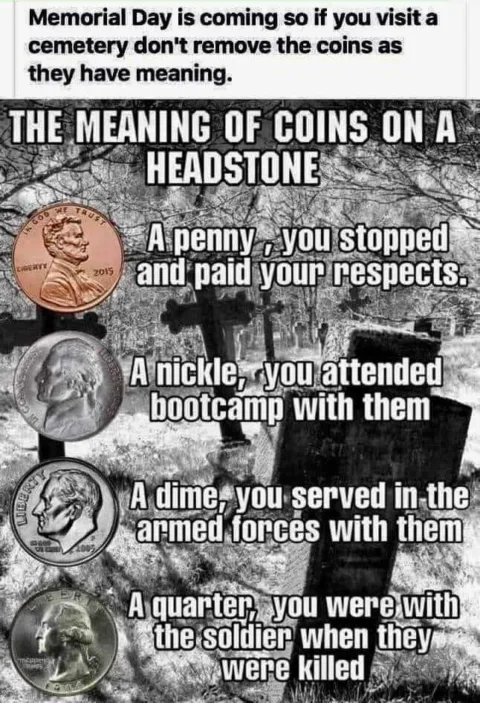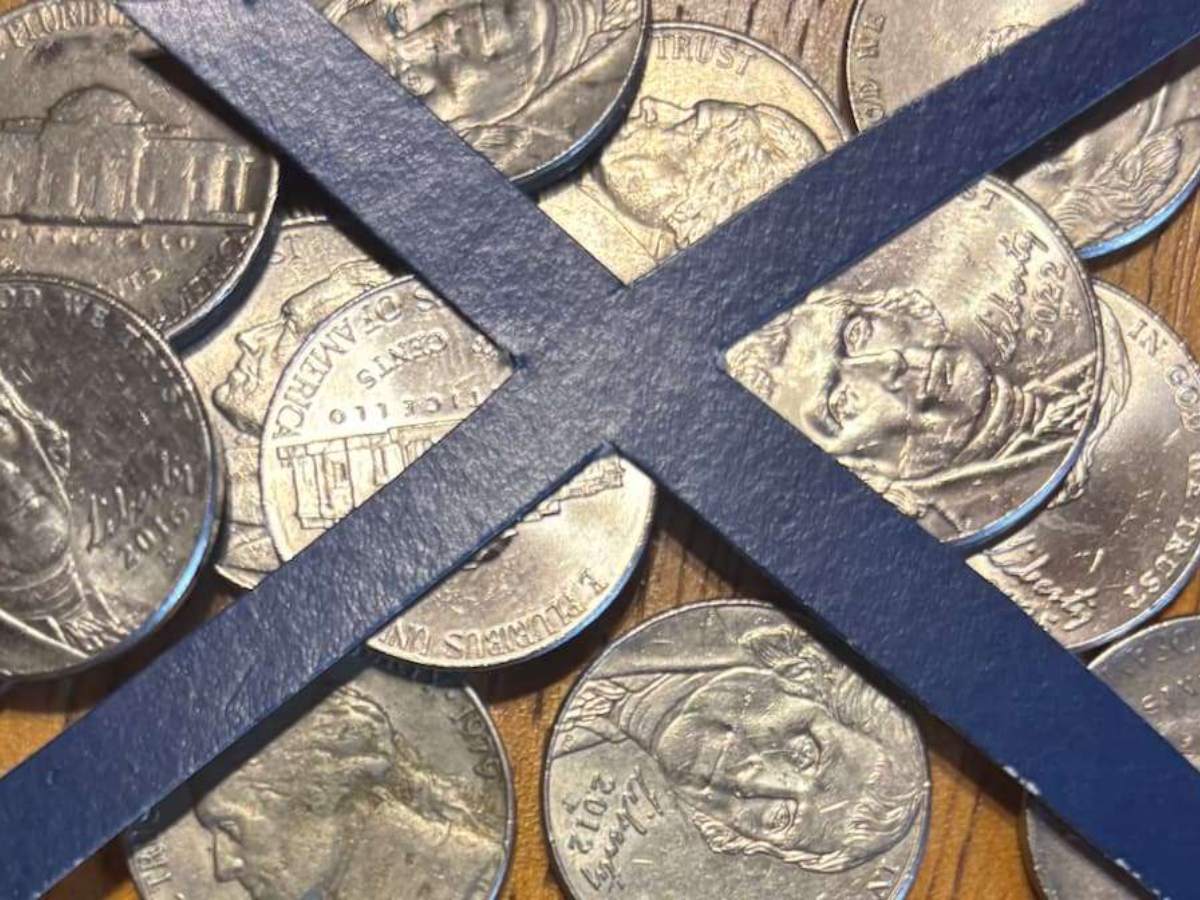
Have you ever seen pennies, nickels, dimes, or quarters on graves and wonder why coins are left there?
It’s an old tradition to leave coins on graves, and the story behind why coins are left on graves is filled with much respect for the deceased.
People have been leaving coins on headstones since the days of the ancients — and it’s a custom that continues to this day.
Pass by any cemetery and you’re sure to find at least a few graves with coins on them.
Even the grave of popular American Founding Father Benjamin Franklin in Philadelphia is graced with the presence of many pennies — a fitting tribute to the man behind the phrase “a penny saved is a penny earned.”

Why Coins Are Left On Graves
The tradition of leaving coins at graves is known at least since the Roman Empire and has many sentimental meanings.
However, the ritual of leaving a coin on a grave has increased in the United States since the Vietnam War — which spanned from 1955 through 1975 and saw the deaths of 58,148 U.S. soldiers and many thousands more among Allied ranks.
According to the Department of Military Affairs in Montana, there are specific meanings behind what types of coins are left behind at the grave of a soldier:
- Placing a penny on the grave symbolizes that you visited.
- Leaving a nickel recognizes that you and the deceased trained together at boot camp.
- Putting a dime on the grave represents that you and the deceased served together in the military.
- And laying down a quarter upon the grave means you were there when the veteran died.
A good reminder to all of us when visiting cemeteries…

Other Traditions Involving Coins And The Deceased
In addition to placing coins on graves, there are many other traditions involving coins and the deceased:
- In the age of the ancient Romans and Greeks, a coin was placed in the mouths of deceased loved ones to provide the toll for their passage into the afterlife.
- Christian traditions throughout Western Europe included placing coins in the mouths or coffins of the deceased — even Pope Pius IX, who died in 1878, was buried with a coin.
- Abraham Lincoln, who served as the 16th United States president and was assassinated in 1865, was buried with two half dollars on his eyes.
- In modern times, people commonly lay pennies on the graves of loved ones to mark a visit.
A couple of other reasons why people may leave coins inside coffins or on the graves of loved ones include:
- A personal connection the deceased may have had with coins — perhaps as a coin collector.
- Others may be buried with coins that have designs, inscriptions, or other symbols that are personally significant to the deceased individual.

Even More Unique Traditions With Coins
People placing coins on graves is an ages-old tradition. There are many other symbolic rituals that also involve coins.
Let’s look at a few of them…
Tossing Coins Into Fountains
Chances are you have tossed a coin into a fountain at least once — but not before making a wish! This tradition goes back centuries and is something people all around the world embrace. One of the most beloved of these rituals involves the Trevi Fountain in Rome. The 1954 film Three Coins in the Fountain, which features the iconic Italian landmark, popularized this legend: “Throw one coin in the fountain to return to Rome, two coins means you’ll meet an attractive Italian, and three ensures you’ll marry them.”
Sixpence On Wedding Days
Coins and weddings have long gone hand-in-hand… Silver and gold coins were often given to brides and grooms or newlyweds as a symbol of future prosperity and wealth. Other traditions tie giving people coins on their wedding day for good luck. And one of the most enduring wedding traditions entails a sixpence coin. You may have heard the saying, “Something old, something new, something borrowed, something blue, and a sixpence for her shoe.” This ritual dates back to the 1600s and represents financial security for the bride.
Challenge Coins
A type of novelty piece known as a challenge coin is a popular collectible that is embedded in military tradition dating back to World War I. In modern times, challenge coins have become collegial gifts that are given between military comrades. They are also used by law enforcement, fire departments, and other groups as goodwill gifts symbolizing their organization. Some people lay challenge coins on the graves of those who once belonged to their fraternal group as a symbol of love or respect.
Holiday Coins
Coins are a big part of Christmas and Hanukkah traditions going back centuries. Nicholas of Myra, the fourth-century Christian bishop who inspired the modern-day Santa Claus, was a charitable person who tossed gold coins through the windows of poor families to spare their daughters from impoverished lives on the streets. In the benevolent spirit of St. Nick, many people still give gifts of coins for Christmas. Hanukkah traditions involve giving gifts of coins between friends, with parents often giving their children coins, too. This tradition, which dates back 2,000 years, has also evolved into a custom of giving gifts of foil-wrapped chocolate coins, known as “gelt” (the Yiddish word for money), to loved ones and friends during Hanukkah.
“See A Penny, Pick It Up…”
“…And all day long you’ll have good luck!” Or, so they say. Many people believe coins can bring them good luck. Countless people around the world carry a good luck coin in their pocket or purse, some place them inside of their wallets, and some place them inside jewelry-mounted charms. Lucky coins are often ascribed their “lucky” status because the owner happened to find them during a fortunate event in their life. Sometimes, they happened upon the coin during a trying circumstance and things soon turned around for them after finding that coin. Some souvenir pieces are even sold as “lucky coins.” I don’t know if coins really bring good luck… but given the popularity and enduring tradition of lucky pennies, lucky silver dollars, and other lucky coins, it’s safe to say they must be doing something right!




